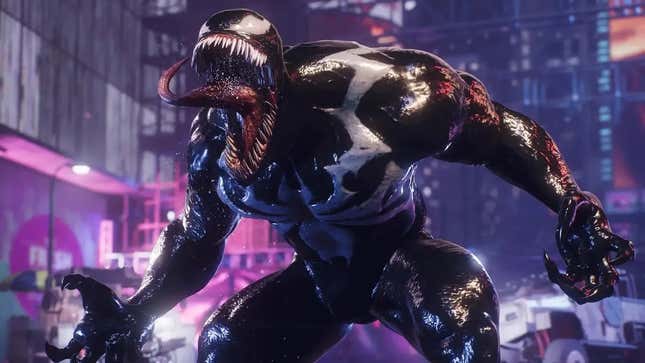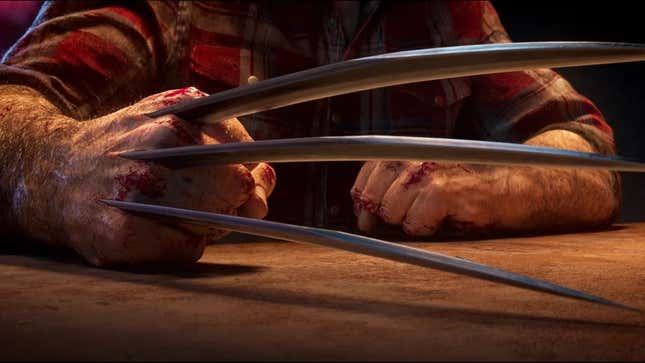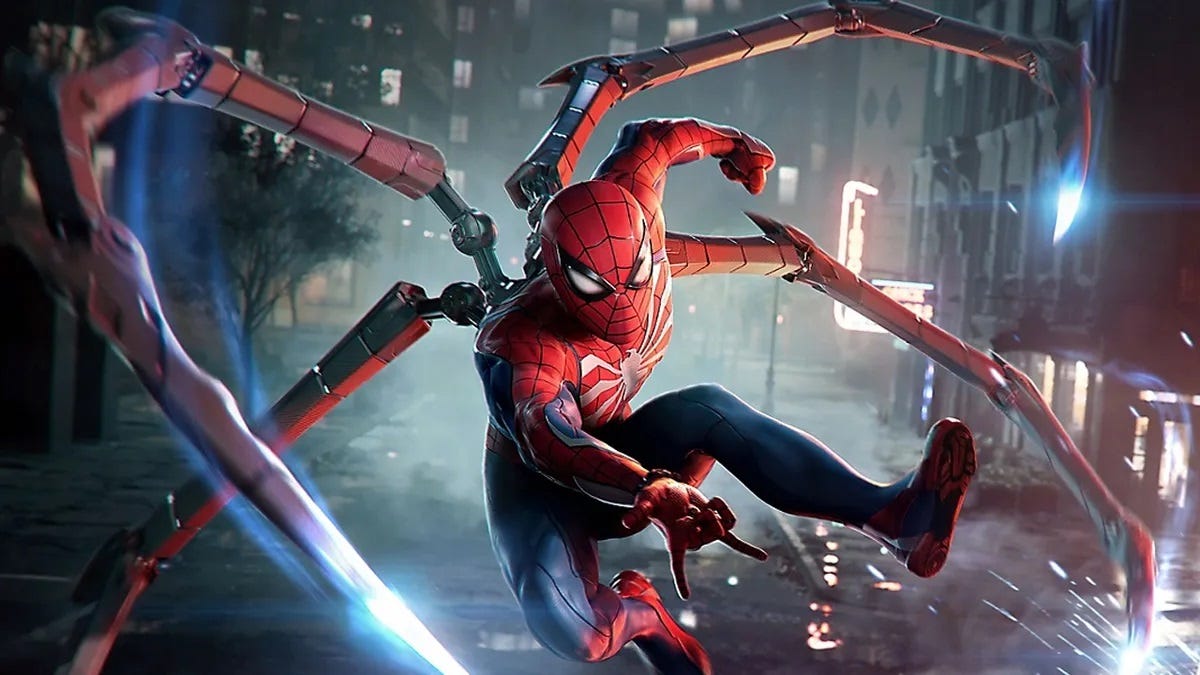Insomniac Games quickly established itself as one of the most prolific studios within PlayStation after Sony acquired it for what seems like a bargain at $229 million four years ago. 2020's Spider-Man: Miles Morales, 2021's Ratchet & Clank: Rift Apart, and this year’s Spider-Man 2 showed that the studio could keep putting out technically impressive blockbusters without sacrificing quality.
Spider-Man 2's New Web Wings Make It Feel Like A Proper Sequel
Now, various internal documents released online as part of a malicious ransomware hack suggest just how hard this has been to pull off, with studio leaders juggling teams, timelines, and budgets like Tetris blocks in order to ship games that aren’t just excellent but also profitable. They also hint that possible cutbacks within Sony Worldwide Studios may only be adding to the challenge.
Sony did not respond to a request for comment.
Spider-Man 2 was a big milestone for Insomniac Games. In addition to garnering rave reviews and a Game of the Year nomination at this year’s Game Awards, Sony also called it the fastest-selling PlayStation game ever, despite being a PS5 exclusive. But the web-slinging blockbuster, which featured dazzling action set pieces and tons of carefully crafted story beats, was seemingly also the studio’s most expensive game ever. One internal presentation pegged the final cost at around $300 million, almost three times the cost of 2018’s Spider-Man for the PS4.
While the internal presentations, emails, and meeting notes released as part of the hack are a narrow and incomplete picture of the studio, they nevertheless offer a small glimpse of the types of problems Insomniac Games is thinking through at the moment, and its hopes for the future. A finance post-mortem on Spider-Man 2 delivered in November broke down the costs of the project in detail.

Pre-production began in 2018, and at peak earlier this year there were 264 developers working directly on the project, with an additional 116 contributing in the form of managers, IT staff, and other support roles. 314 minutes of cinematics alone cost over $40 million. The final cost was roughly $30 million over the original $270 million budget, according to the presentation, requiring the game to sell 7.2 million copies at full price to break even. The game had sold 6.1 million copies as of November 12.
Another presentation from over the summer looking at Insomniac’s next five years outlined development improvements the studio hopes to take advantage of while making its upcoming Wolverine action game without costs growing even further. Notes from the presentation mention Toyota factory-style “line stops” leaders can use to halt production when certain problems are discovered so they’re fixed early rather than creating bigger issues down the line. The presentation also directly called out cinematics and scene length as one area that had “sprawled out past our initial estimates” in past games. Wolverine, on the other hand, will feature a centralized story-design pipeline to try and streamline things. All of this is being done with the clear aim of delivering a “GOTY Contender” by 2026.
These and other presentations provide a clear sense that Insomniac, despite its successes and the seeming resources of its parent company, is grappling with how to reverse the trend of ballooning blockbuster development costs. “We have to make future AAA franchise games for $350 million or less,” reads one slide from a “sustainable budgets” presentation earlier this year. “In today’s dollars, that’s like making [Spider-Man 2] for $215 million. That’s $65 million less than our [Spider-Man 2] budget.” Another slide puts the problem more starkly: “...is 3x the investment in [Spider-Man 2] evident to anyone who plays the game?”
Games like Miles Morales, a stop-gap spin-off, offer one possible alternative. The shorter adventure had a budget of only $90 million, according to one 2022 presentation on “mid-sized games.” But it went on to sell over 10 million copies, making it incredibly profitable in addition to being beloved by fans. The presentation notes that these mid-sized games generally take two years less to make than tentpole games like Spider-Man 2, helping to reduce the time between new games, as well as the risks if something goes wrong in development.
All of this underlines the tough choices a studio like Insomniac has to make when deciding which projects to move forward with and when. Internal documents from the hack showed multiple timelines for different slates of games depending on which ones are prioritized or shelved. While the next big game is Wolverine, followed eventually by Spider-Man 3 and an X-Men game, presentations show Insomniac was looking at different roadmaps at various points in time.

These included live-service multiplayer modes, a standalone Venom game, and the possibility of breaking Spider-Man 3 into two parts. Excel spreadsheets show developers grouped into blocks of 30, revealing the budget and scheduling impacts depending on which projects they are moved to and when. A spreadsheet of winter work assignments sent in September only shows teams working on Wolverine, Spider-Man 3, a new Ratchet and Clank, and a new IP, as well as post-launch updates on Spider-Man 2. Notes from a July meeting suggest Wolverine was supposed to ship in 2025 and Insomniac needed to find a project that could fill that gap if it moved to 2026.
Whatever final decisions Insomniac decided to make about its upcoming projects, some internal documents suggest budget cuts demanded by Sony have complicated matters. Presentations earlier in the year point to a rough projected headcount of 500 moving forward. But a September email from Sony specified a full-time employee max headcount of 470, down from its current estimated 485 employees. PowerPoint slides from a September presentation reference “6 potential areas to reduce headcount,” including a few layoffs, not backfilling certain positions, and placing up to five employees on performance improvement plans which might eventually end in them getting fired.
A more recent presentation in November points to potentially more drastic cuts. “Slimming down Ratchet and cutting new IP will not account for the reductions Sony is looking for,” reads a PowerPoint note attributed to Insomniac head Ted Price. “To remove 50-75 people strategically, our best option is to cut deeply into Wolverine and Spider-Man 3, replacing lower performers with team members from Ratchet and new IP.”
That same presentation argues that releasing a standalone Venom game in 2027 would deliver outsized profits and also create a “bridge” to Spider-Man 3, much like Miles Morales did for Spider-Man 2. It’s unclear if the proposal for that game would have alleviated or reduced the need for cuts. The presentation notes attributed to Price point out that those working on Ratchet and the new IP are veterans of the studio, and cutting them would “lose institutional knowledge and leadership that is key for future titles.” The presentation also notes that cuts to teams would create a flight risk that could lead to additional departures.
Business plans change, and Sony would not confirm if the discussed cuts are still on the table or already completed. But a notes file referencing a November 9 PlayStation off-site meeting reiterates the 50-75 number of cuts. The notes suggest the cuts are being asked of other PlayStation studios as well, including the line “there will be one studio closure.” Sony did not respond when asked to clarify.
In an especially tough year for video game companies, Sony hasn’t been immune. It closed Pixel Opus earlier this year, and Sackboy maker Media Molecule saw layoffs. Contractors were cut at The Last of Us studio Naughty Dog and PlayStation’s Visual Arts studio suffered cuts as well. It’s hard to tell if that’s the extent of the damage or just the beginning. The hacked materials from Insomniac show leaders at a studio that’s delivered hit after hit scrambling to arrive at a plan for the next five years so it can keep doing that.
